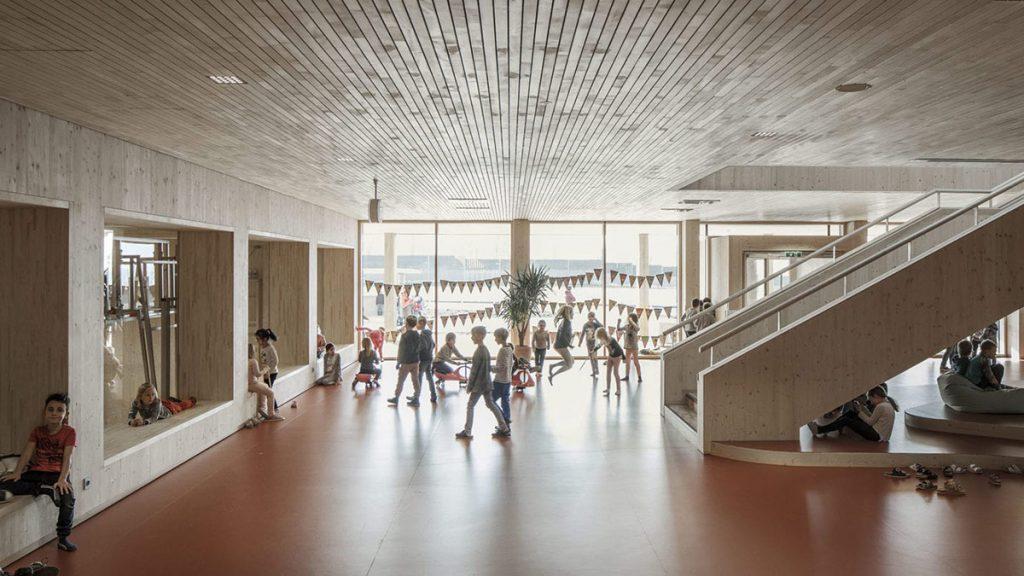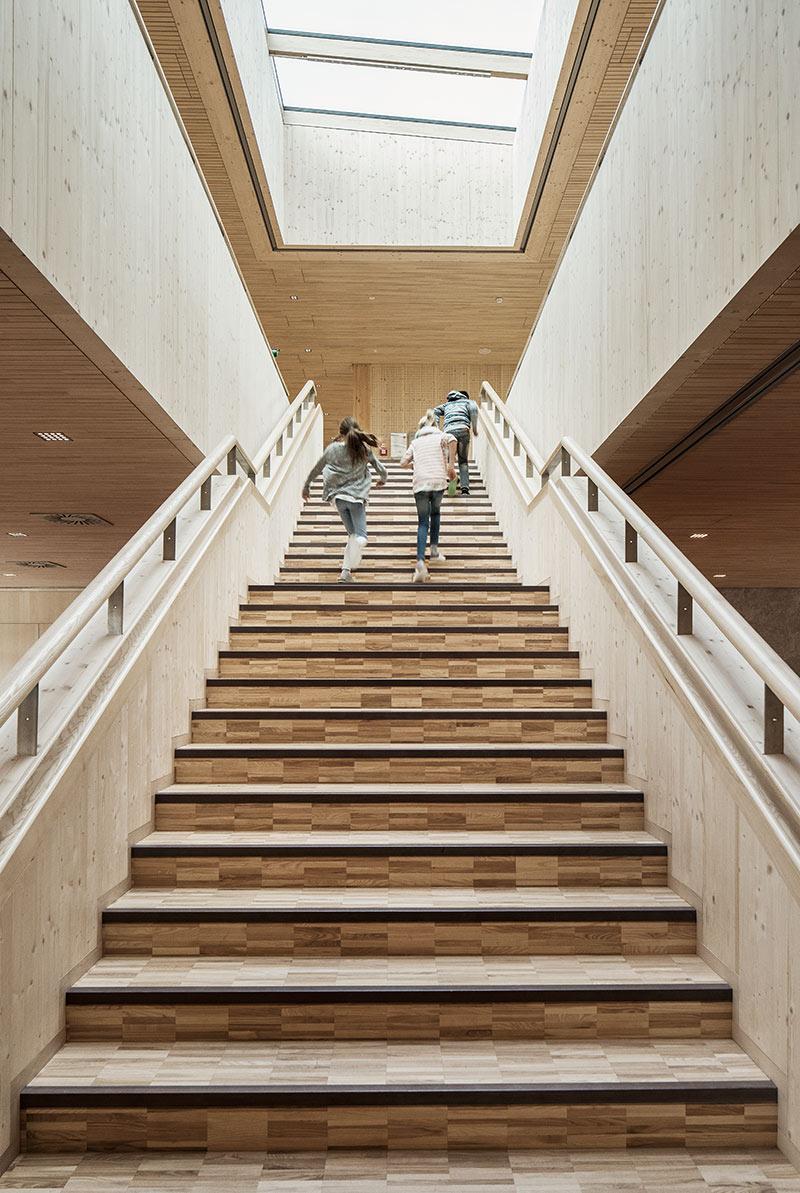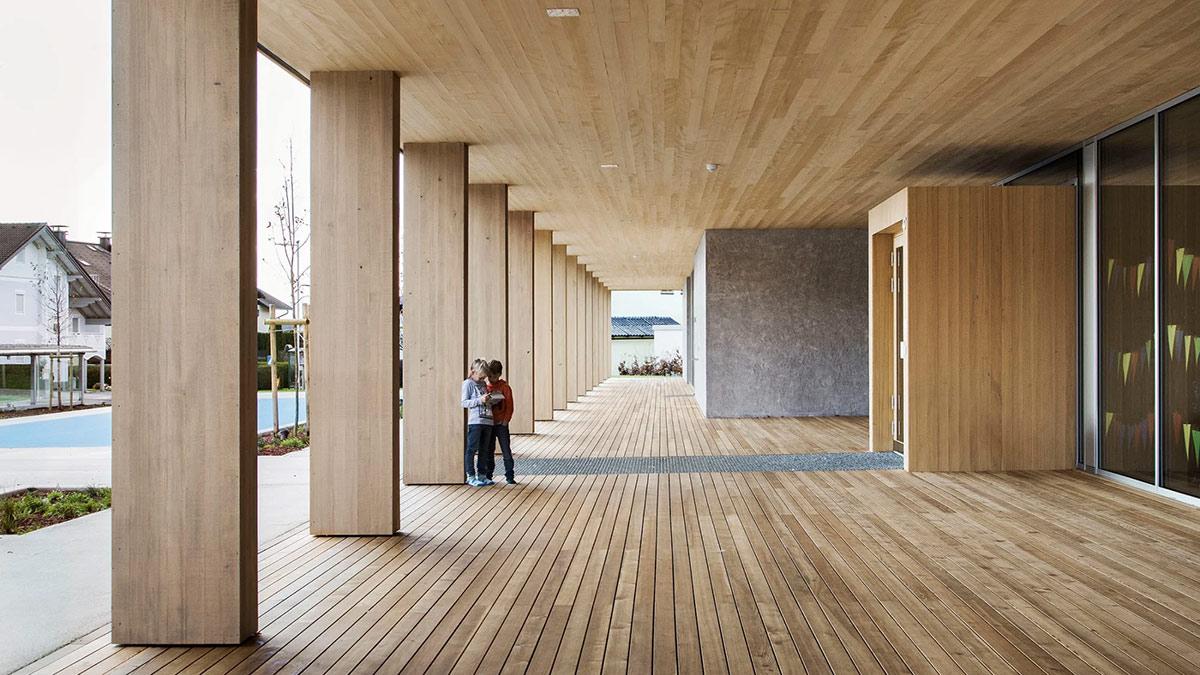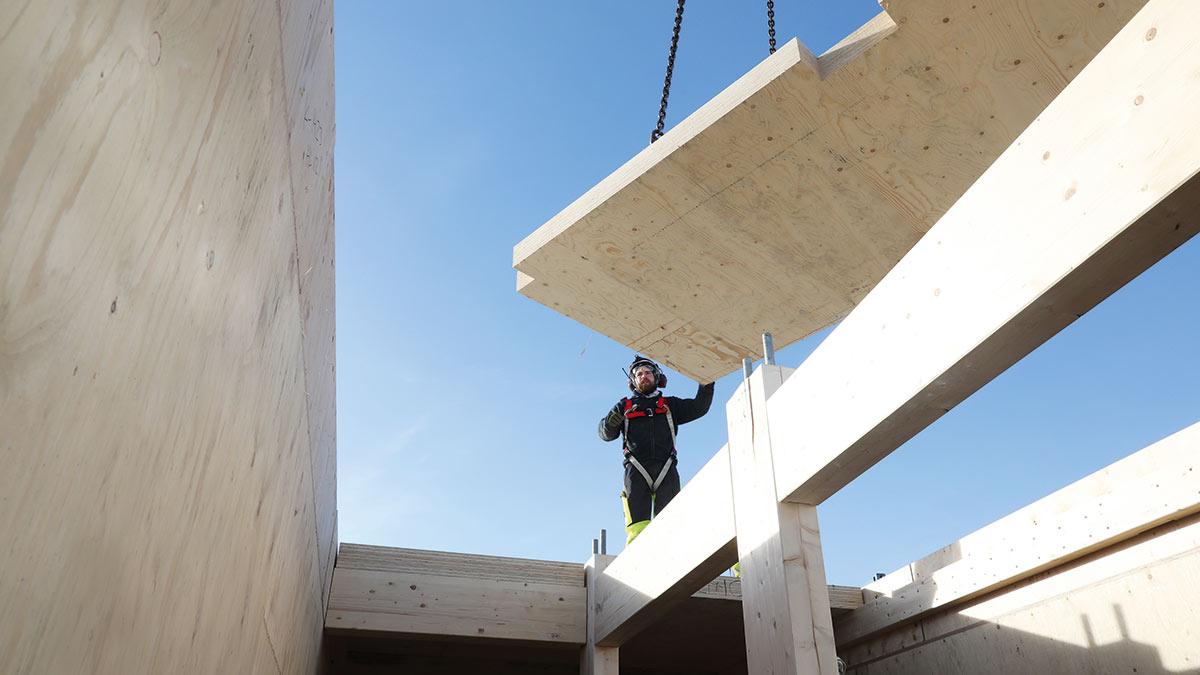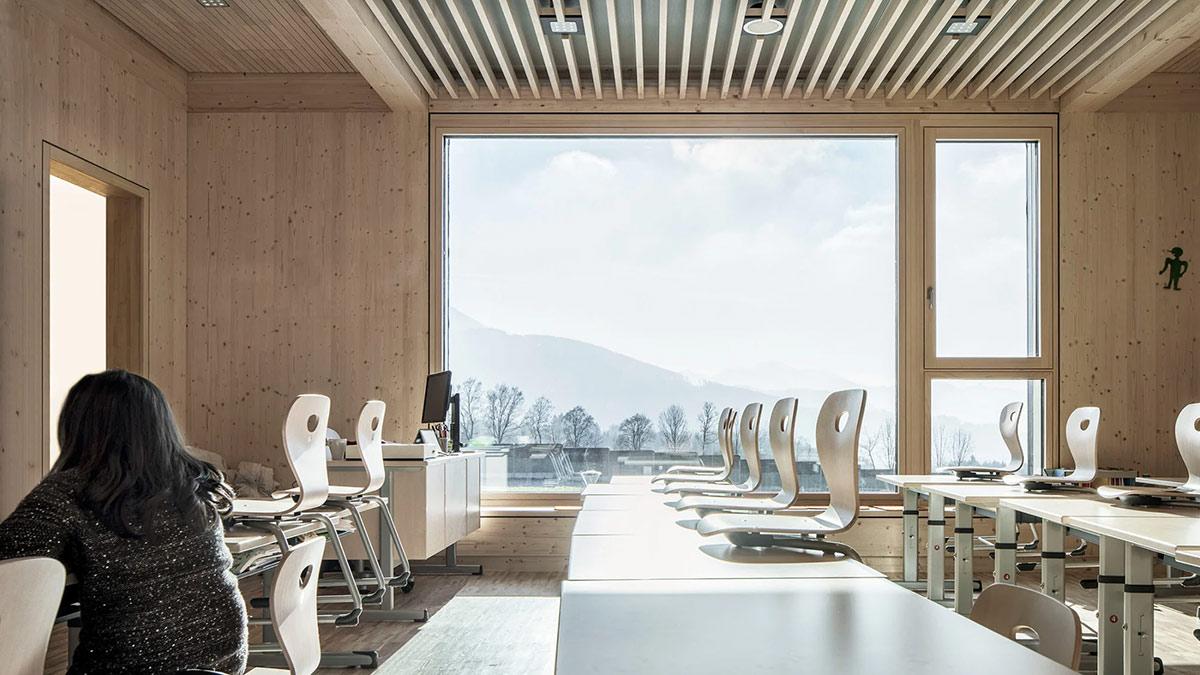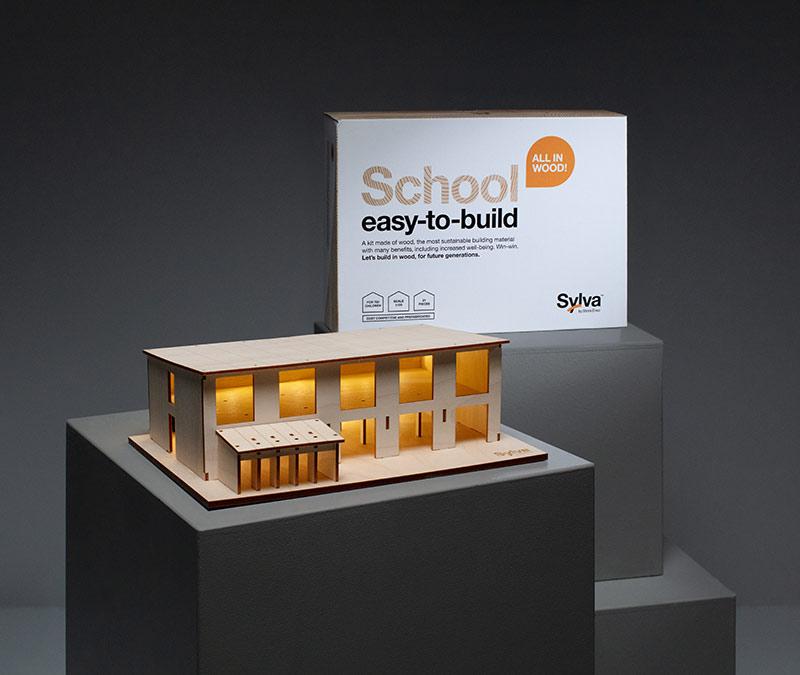New schools from construction kits
There is a severe shortage of schools – 15,000 are needed in Europe alone. The easy-to-assemble kit from Stora Enso – called Sylva – can be used to create eco-friendly wooden schools that offer children a positive learning environment and architecture that gives them a sense of meaning and purpose.
Environmental awareness is known to be particularly strong among schoolchildren. There are good reasons why the “School Strike for Climate” initiated by Greta Thunberg became a global movement. “It means that schoolchildren need to be taught in buildings that are constructed in a climate-friendly way. This makes them feel proud of the school and increases their sense of belonging and responsibility,” says headteacher Laila Owren from Nordre Ål skole, a primary school in the Norwegian town of Lillehammer. It has been reaping the benefits since its new mass timber building was constructed a few years ago. Prefabricated wooden elements were supplied by the Finnish-Swedish company Stora Enso, which has specialized in modular timber solutions.
Stora Enso, one of the largest forestry companies in the world, has built new, climate-neutral headquarters. The Katajanokan Laituri complex in Helsinki is a masterpiece of Finnish timber construction.
A shortage of schools
This building kit, which goes by the name Sylva™, is advertised as a product that is so user-friendly and low-threshold, it could even be sold at ice cream stalls. “It has definitely helped to draw attention to timber construction and increased interest in sustainable building solutions,” says Bernd Troppmann, Sales Director of Building Solutions at Stora Enso.
Sylva shortens construction time by a third and reduces CO2 emissions by 70 percent compared to conventional building methods.
Bernd Troppmann, Sales Director of Building Solutions, Central Europe, Stora Enso
Besides schools, the customized modules and construction kits can be used for offices and commercial buildings as well, Troppmann continues. But there is a particularly urgent need for schools. In a large number of European countries, the lack of space in schools and the dilapidation of many buildings is striking. There is said to be a shortage of 15,000 schools in Europe alone.
“Sylva shortens construction time by a third and reduces CO2 emissions by 70 percent compared to conventional building methods. At the same time, costs are lower overall, and resources are preserved,” Troppmann explains.
Exemplary primary school in Hallwang
The kit has already been used to construct numerous educational facilities – from children’s preschools to university buildings. One example is Hallwang primary school near Salzburg, which is a real eye-catcher. The two-storey hybrid-timber building was designed by Austrian firm LP Architektur. In the recreation hall, which is directly adjacent to the entrance area, there are cosy seating niches offering a view of the sports hall below via the glazed rear wall. The cross-laminated timber elements remain uncovered for the most part and serve as natural timber surfaces in the building.
Using wood as a building material for schools minimizes the amount of grey energy used. In other words it minimizes the harmful emissions created when the construction materials are manufactured. The carbon stored in the wood over the long term also acts as a carbon sink, as new trees planted in the forest absorb new CO2.
This school is also exemplary when it comes to building operation. Most of the electricity comes from solar energy. The school’s flat roof is equipped with 373 square metres of photovoltaic panels. Solar gains can be stored in the solid building components over a relatively long period of time.
Wood counteracts stress
In addition to its good carbon footprint and short construction time, wood offers another advantage that directly benefits schoolchildren: “Schools made of wood create a better learning environment,” Troppmann explains. A one-year study by proHolz and Holzcluster Steiermark found that wood as a construction material has a positive impact on our ability to concentrate and general well-being. Children in rooms made of wood had a calmer pulse and felt less stressed than in conventional school buildings. Other studies have also shown lower blood pressure and greater creativity in schools made of wood.
Would Greta Thunberg feel at home in a school made of wood like this? “The main issue here is what we all, together, want to offer our children,” Troppmann replies. When you consider that children spend 90 percent of their time indoors, architecture can indeed play a major part in improving their well-being and positively influencing their health.
Text: Gertraud Gerst
Photos: Albrecht Imanuel Schnabel, Stora Enso / Ludvig Woll / Sami Kero
